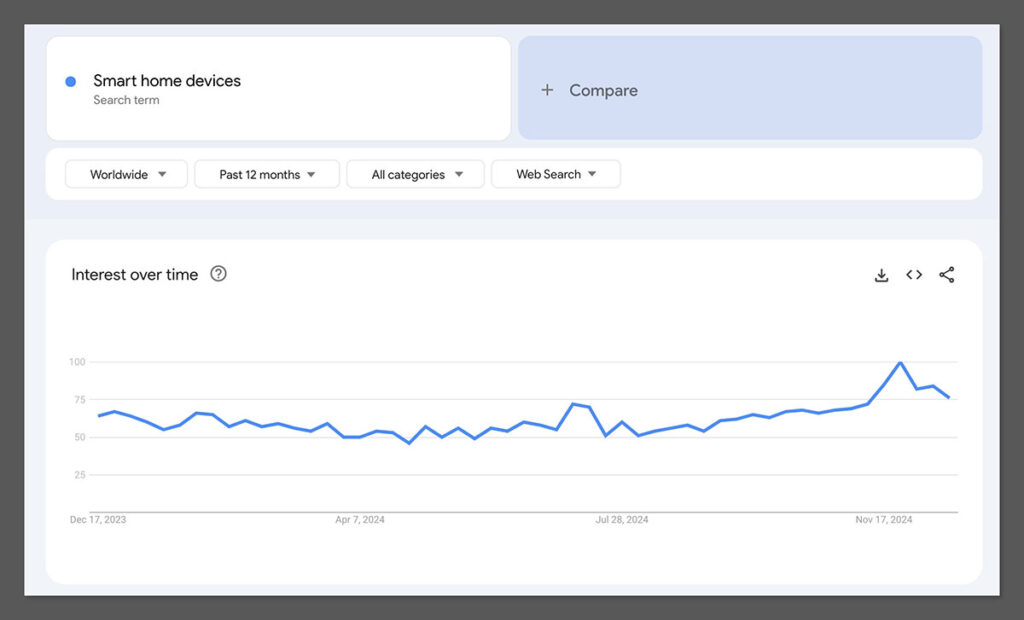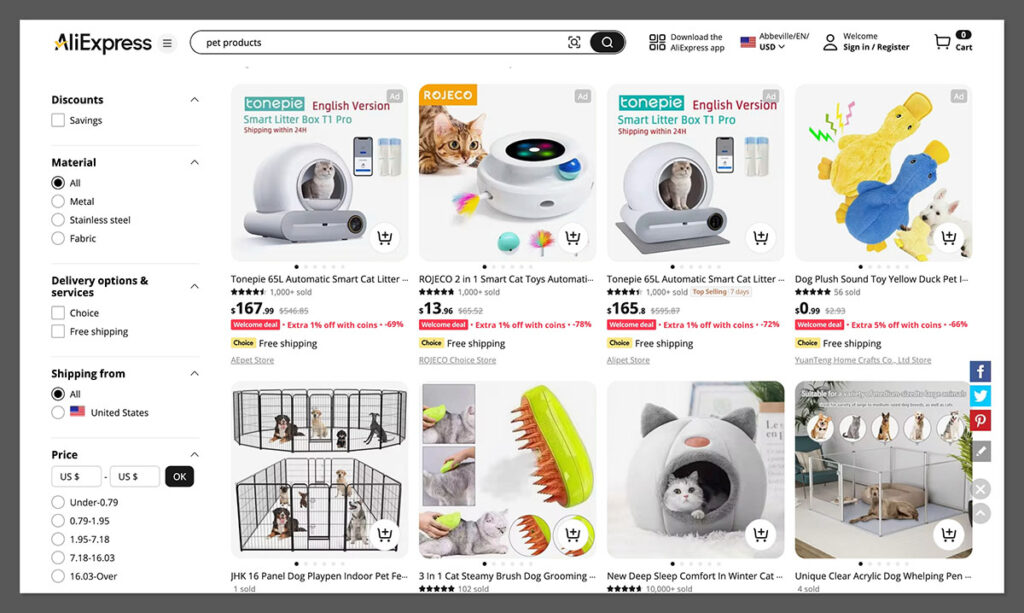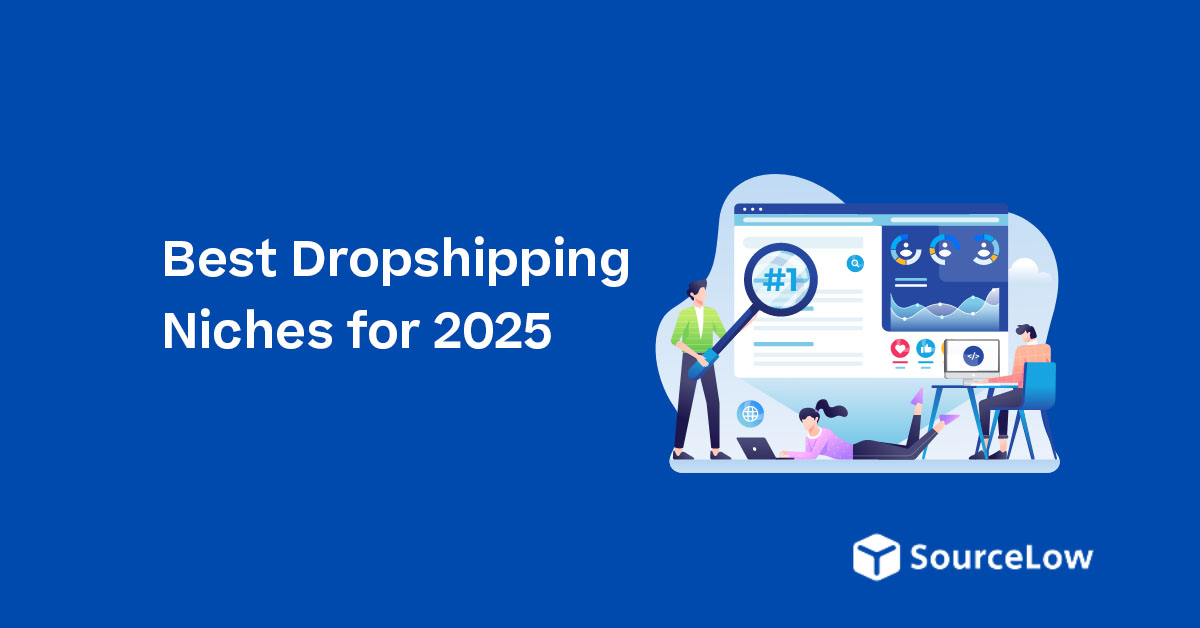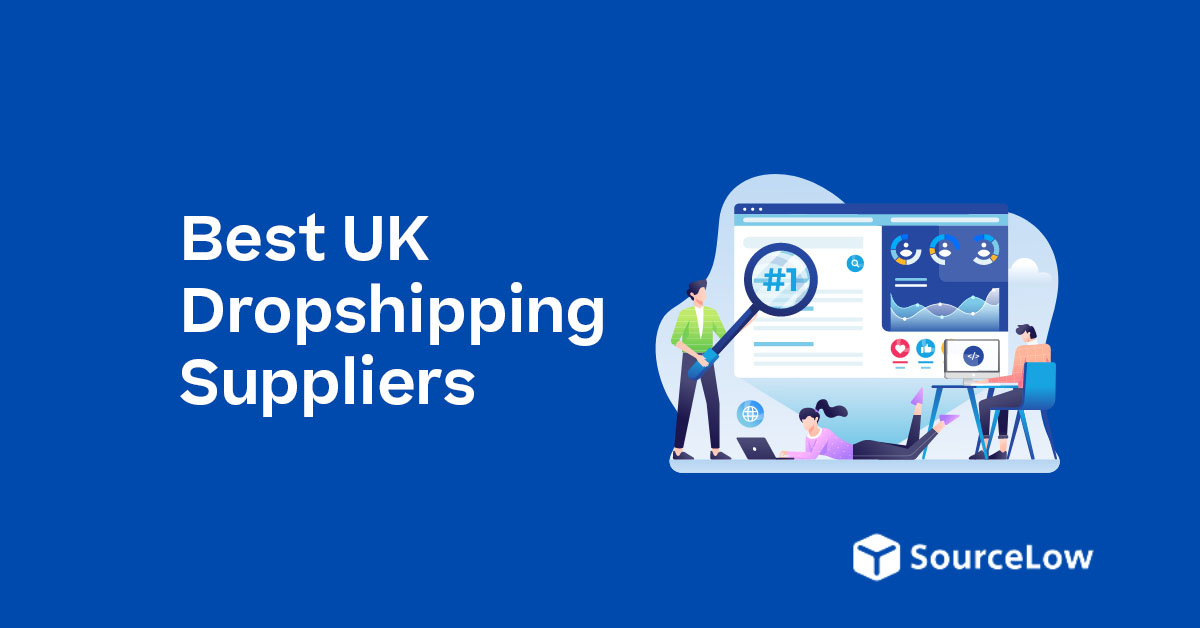Disclosure: We may earn a commission or fee from some of the links in our content. However, this does not affect our recommendations. Learn more.
Dropshipping has become a popular e-commerce model where you can sell products without holding inventory.
Choosing the right niche is key in this crowded space. I’ve done the research and found some dropshipping niches for 2025.
The best dropshipping niches have high demand, low competition and high profit margins.
Some of the top ones are eco friendly products, smart home devices, pet accessories and wellness items.
These categories are tapping into growing consumer trends and are open to newbies.
I’ll go into each of these niches in detail, including market potential, target audience and product selection strategies.
By focusing on these profitable areas, new dropshippers can set themselves up for success in the ever changing world of online retail.
What is Dropshipping
Dropshipping is a retail fulfillment method where stores don’t hold inventory. I’ll explain how this business model works and the pros and cons.
The Dropshipping Business Model
I sell products without stocking them myself. When a customer orders, I buy the product from a third party supplier who ships it to the buyer.
This way I don’t have to manage inventory or handle shipping logistics. I’m just the middleman between the customer and supplier.
The process works like this:
- I list products on my store
- A customer orders and pays me
- I forward the order to my supplier
- Supplier ships the product to my customer
I make money by charging retail prices and paying wholesale to my suppliers. My profit is the difference between the two.
Pros and Cons
Dropshipping has its advantages. I can start an online store with minimal upfront investment since I don’t have to buy inventory. It’s scalable – I can add new products without worrying about storage or shipping.
The low risk of dropshipping allows me to test different product niches quickly. If something doesn’t sell well I can just remove it from my store without being stuck with unsold inventory.
But dropshipping isn’t without challenges. Profit margins can be thin due to high competition. I have less control over product quality and shipping times which can affect customer satisfaction.
Stock management can be tricky as I rely on suppliers to hold inventory. Suppliers can also increase their prices and eat into my profit.
Choosing a Dropshipping Niche
Choosing the right niche is key to dropshipping success. I’ll walk you through market research, customer demand analysis and evaluating the competition to find your niche.
Market Research 101
I always start by finding trending products and emerging markets. Google Trends and social media are great tools for this. I look for niches with steady or growing interest over time.
I also consider seasonality and long term viability. Some niches may be hot right now but will fizzle out quickly. I look for a balance between current popularity and long term potential.
To gauge profitability I look at pricing trends and profit margins. I use tools like Jungle Scout and Helium 10 to estimate sales volume and competition on major e-commerce platforms.
Customer Demand Analysis
Understanding customer needs is key to choosing a profitable niche. I dig deep into online forums, product reviews and social media to find pain points and desires.
I create buyer personas to better understand my target market. This helps me to target my product and marketing.
To quantify demand I use keyword research tools like SEMrush or Ahrefs. These show me search volume for product related keywords and gives me an idea of consumer interest.
I also look at purchase frequency and customer lifetime value. Niches with repeat purchases often lead to more stable businesses.
Competition Analysis
I thoroughly research existing competition in potential niches. Too much competition can make it hard to stand out and too little might mean lack of demand.
I research competitors’ websites, marketing and customer reviews. This shows me gaps in the market I can fill.
I use tools like SimilarWeb to analyze competitors’ traffic sources and engagement metrics. This helps me to know which marketing channels work in the niche.
Lastly I consider barriers to entry. Some niches require special knowledge or higher initial investment. I weigh these against potential returns to make a decision.
Trending Dropshipping Niches
I’ve found several dropshipping niches for 2025. These are based on current consumer behavior and market forecast.
Eco-friendly products are on the rise. Reusable bags, metal straws and biodegradable phone cases are hot.
Smart home devices are booming. Voice activated assistants, smart lighting and connected security systems are great opportunities.

Health and wellness products are still strong. Fitness trackers, meditation apps and organic supplements are trending up.
Pet accessories are a growing market. Automated feeders, GPS collars and interactive toys for pets are showing good sales.
Best Dropshipping Niches for 2025
1. Eco-Friendly and Sustainable Products
Green products aren’t just a trend—they’re the future. Shoppers are actively looking for ways to reduce their environmental impact, and they’ll pay a premium for brands that help them do it.
What Works:
- Reusable kitchen items like beeswax wraps and silicone storage bags.
- Solar-powered gadgets and biodegradable phone cases.
- Eco-friendly personal care items like bamboo toothbrushes.
Why It Works:
- Millennials and Gen Z dominate online shopping, and they care deeply about sustainability.
- Products like these have a high perceived value, which means you can charge more.
Pro Tip:
Tell your customers your brand story. Show them how your products are helping the planet—people love supporting brands that align with their values.
2. Pet Products and Accessories

If there’s one thing I’ve learned, it’s this: people will always spoil their pets. The pet care industry keeps growing, and new gadgets and accessories are popping up all the time.
Hot Items:
- Smart pet tech like GPS trackers and auto-feeders.
- Personalized collars and custom pet portraits.
- High-tech toys and interactive feeders for mental stimulation.
Why It Works:
- Pet owners are emotionally invested and willing to spend.
- Tons of upselling potential—think matching leash-and-collar sets or add-on toys.
Pro Tip:
Build a social media presence by sharing customer photos and videos of their pets using your products. Pet parents love showing off their furry friends.
3. Home Fitness and Wellness Equipment
Even as gyms reopen, home workouts are here to stay. I’ve seen firsthand how this niche continues to grow because people want convenience and results at home.
Winning Products:
- Compact gear like resistance bands and adjustable dumbbells.
- Recovery tools like massage guns and foam rollers.
- Fitness trackers and nutrition aids like meal prep kits.
Why It Works:
- Broad audience appeal, from casual exercisers to serious athletes.
- Seasonal demand spikes (January’s New Year’s resolutions are gold).
Pro Tip:
Run targeted ads with workout tutorials using your gear. Show how your products can help people hit their fitness goals.
4. Digital Nomad and Remote Work Gear
Remote work isn’t going anywhere, and digital nomads are only growing in numbers. These customers want tools that help them stay productive and comfortable, whether they’re at home or traveling.
Popular Picks:
- Portable monitors and foldable laptop stands.
- Ergonomic chairs and back supports.
- Travel organizers for tech gear.
Why It Works:
- High-ticket products with amazing upsell potential.
- Remote work is a global trend that’s still gaining traction.
Pro Tip:
Create Instagram reels or YouTube shorts showing how your products fit into the day of a remote worker or digital nomad.
5. Niche Fashion and Accessories
Forget fast fashion—niche fashion is where it’s at. From goth streetwear to pastel cottagecore, micro-niches are booming because they speak to passionate subcultures.
What’s Hot:
- Statement jewelry and minimalist pieces.
- Streetwear essentials like crossbody bags and bucket hats.
- Aesthetic clothing tailored to niche trends (goth, Y2K, boho).
Why It Works:
- These customers are loyal and love to express themselves.
- You can build a community around your brand.
Pro Tip:
Collaborate with influencers in your chosen niche to showcase your products authentically. Their followers are already into your aesthetic.
6. Smart Home Gadgets
Smart home tech has gone from a luxury to a must-have. It’s an easy sell because these gadgets make life easier, safer, and more connected.
Best Sellers:
- Smart plugs, lightbulbs, and thermostats.
- Home security cameras and motion sensors.
- Voice assistant add-ons like mounts and stands.
Why It Works:
- High perceived value, which means you can price high.
- Perfect for tech-savvy buyers who love convenience.
Pro Tip:
Use video content to show how seamless and easy your gadgets are to use. Demos sell!
7. DIY and Craft Kits
Creative hobbies blew up during the pandemic, and they’re not slowing down. Crafting is a great niche because it appeals to a wide range of people and makes for amazing gifts.
Top Products:
- Candle-making and soap-making kits.
- Paint-by-numbers for adults.
- Embroidery kits and wood-carving sets.
Why It Works:
- High engagement and repeat customers.
- Appeals to the growing “slow living” movement that prioritizes mindfulness.
Pro Tip:
Tap into Pinterest to market these kits—it’s the perfect platform for DIY inspiration.
8. Outdoor and Adventure Gear
As someone who’s dipped into the outdoor niche, I can vouch for its loyal customers. Camping, hiking, and outdoor exploring are hobbies that people invest heavily in.
Top Products:
- Compact camping gear like hammocks and portable stoves.
- Hiking gadgets like GPS watches and water filters.
- Durable outdoor clothing and multi-use survival tools.
Why It Works:
- Buyers prioritize quality, meaning higher price points are easier to justify.
- The market sees seasonal peaks during warmer months.
Pro Tip:
Use stunning visuals of nature and adventure to promote your products. The outdoors sells itself.
9. Baby and Kids Products
Parents are some of the best customers you can target. They’re always looking for the best for their kids and don’t mind spending extra for it.
Top Sellers:
- Developmental toys for toddlers.
- Personalized baby items like name blankets.
- Eco-friendly baby essentials like bamboo bibs.
Why It Works:
- Safety and quality are top priorities for parents, so they’ll pay a premium.
- Constant demand as babies grow out of products quickly.
Pro Tip:
Partner with mom influencers to show how your products make parenting easier.
10. Health and Beauty Tech
Self-care is huge right now, and gadgets that make it easier are flying off the shelves. From skincare to wellness, people love investing in themselves.
Top Products:
- LED therapy masks and cleansing brushes.
- Cordless hair tools like straighteners.
- Posture correctors and sleep aids.
Why It Works:
- High margins on innovative products.
- Perfect for social media ads showing dramatic before-and-after results.
Pro Tip:
Invest in influencer partnerships for authentic demonstrations. Customers love seeing these products in action.
Niche Criteria
When I choose a dropshipping niche I consider several key factors to ensure success. These criteria help me to find profitable and sustainable opportunities.
Profit Margins and Pricing
I always research the profit margins in a niche before I get in. Products with higher price points have better margins. I’m looking for at least 20-30% margin after all costs.
Pricing is key. I research competitors’ prices and make sure I can offer competitive prices and still be profitable. Dynamic pricing tools help me to adjust prices based on market demand and competitors’ activity.
I also look at the perceived value of products. Products with high perceived value and lower production cost can have great margins. Unique or special products can command premium prices.
Supplier and Quality
Reliable suppliers are the backbone of a successful dropshipping business. I research potential suppliers, check their history and customer reviews.
Communication is key. I prefer suppliers who are responsive and provide clear information about stock levels and shipping times. This helps me to manage customer expectations.
Product quality affects customer satisfaction and return rates. I request samples to see the quality myself. High quality products mean good reviews and repeat customers.
I look for suppliers with fast shipping options especially those with warehouses in my target markets. This reduces delivery time and improves customer experience.
Marketing for Dropshipping
Marketing is key to dropshipping success. I’ll go through the marketing strategies to increase your visibility and attract customers.
Social Media and Influencer Partnerships
I found out that social media is important for dropshipping. Instagram and TikTok are great for visual products. I recommend creating content that shows your products in use.
Influencers can expand your reach. I recommend finding micro-influencers in your niche with engaged followers. Collaborate on sponsored posts or provide affiliate links to track sales.
User generated content is gold for dropshipping. I encourage customers to share photos with your products and feature them on your accounts. This builds trust and provides authentic marketing material.
Search Engine Optimization
I can’t stress enough how important SEO is for dropshipping. Start by researching keywords related to your products and niche. Add them naturally into your product descriptions, blog posts and website content.
Optimize your product pages with descriptive titles, alt text for images and unique and informative descriptions. I’ve seen great results from creating blog content that answers common questions in your niche.
Building quality backlinks is key. I recommend reaching out to niche bloggers for guest posting or product reviews to increase your site’s authority.
Paid Advertising
I found out that strategic paid advertising can drive traffic and sales quickly. Google Ads are great for targeting users who are actively searching for your products. I recommend starting with a small budget and focus on high intent keywords.
Facebook and Instagram ads have great targeting options. I recommend creating custom audiences from website visitors and lookalike audiences to target potential customers.
Retargeting campaigns are great for dropshipping. I use dynamic product ads to show visitors the products they viewed on my site and encourage them to complete the purchase.
Product Sourcing and Supplier
Finding reliable suppliers is key to dropshipping success. I recommend starting with well known platforms like AliExpress, Oberlo and SaleHoo to find products and connect with suppliers.
When choosing suppliers I always check their ratings, reviews and communication. I request product samples to verify quality before placing large orders.
Good relationships with suppliers can mean better prices and priority fulfillment. I make sure to communicate clearly, pay on time and provide feedback on product quality and shipping time.
Diversifying supplier relationships is a smart move. I work with multiple suppliers for each product category to minimize risk and ensure inventory availability.
I negotiate for better terms like bulk discounts or faster shipping to impact profit margins. I’m not afraid to ask for better deals especially as order volume grows.
Regular supplier performance review helps me to identify top performers and areas for improvement. I track metrics like order accuracy, shipping time and product quality to make informed decision on supplier partnerships.
Stay updated on market trends and new product releases is key. I attend trade shows and follow industry publications to find new products and potential new suppliers.
Dropshipping Legal
When starting a dropshipping business I found out that legal considerations is key. Proper business registration is the first step. I recommend choosing the right business structure like LLC or corporation.
Getting necessary licenses and permits is also important. These requirements vary by location and product so I always check local regulations.
Trademark and copyright is another consideration. I make sure to not sell products that infringe intellectual property rights. This includes not selling counterfeit products or unauthorized use of logos.
Tax compliance is part of dropshipping. I keep records and collect and remit sales tax where required.
Privacy laws and data protection regulations must be followed. I have secure system to protect customer information and comply with GDPR or CCPA.
Terms of service and return policy is necessary. I have clear policy to avoid legal disputes with customers.
Supplier agreement is important. I always use written contract that outline responsibilities, quality standards and dispute resolution.
Product liability is another concern. I look into insurance options to protect my business from product defect or injury related lawsuits.
Building Your Dropshipping Store
Choosing the right platform and designing a store is key to a successful dropshipping business. I’ll walk you through selecting an e-commerce platform and customer focused design.
Ecommerce Platform
When choosing an e-commerce platform for my dropshipping store I consider several factors. Ease of use is top priority so I can focus on growing my business not struggling with technical issues.
I look for platforms with built-in dropshipping integrations that simplifies product import and order fulfillment. Shopify and WooCommerce are popular choices because of their app ecosystem.
Pricing is another factor. I check the monthly cost, transaction fees and any additional charges for apps and themes. Some platforms offer free trial so I can test before committing.
Scalability is important for future growth. I make sure the platform can handle more traffic and inventory as my business grows.
Customer Focused Design
When designing my dropshipping store I prioritize user experience. A clean and simple layout so customers can find products fast and easy.
I choose a responsive theme that looks good on desktop and mobile. Mobile shopping is growing.
High quality product images is a must. I use clear and professional photos of products from multiple angles. Detailed product description to help customers make decision.
I have a simple checkout process to reduce cart abandonment. Offering multiple payment options including digital wallets can increase conversion rate.
Customer reviews and trust badges gives credibility to my store. I display them prominently to build trust to potential buyers.
Customer Service in Dropshipping
Customer service is part of running a successful dropshipping business. I found out that clear communication with customers is key to building trust and loyalty.
One of the strategy I use is setting up automated email responses. This way customers get instant order confirmation and shipping updates.
I also recommend having live chat on your website. It allows real time problem solving and can increase customer satisfaction.
Having a comprehensive FAQ is another useful tool. It answers common questions and reduces the workload of your support team.
I found out that having multiple contact channels such as email, phone and social media gives customers options on how to reach out.
Training your support team is important. They should be knowledgeable about your products, policies and common issues to give accurate and helpful assistance.
Handling returns and refunds quickly and fairly is important to maintain a good reputation. I always try to make it as smooth as possible for customers.
I collect and act on customer feedback to improve my service. It shows customers that their voice is heard and helps me identify areas to improve.
Remember, good customer service can turn a one time buyer into a repeat customer. It’s an investment that pays off in the long run for any dropshipping business.
Scaling Your Dropshipping Business
As I’ve grown my dropshipping business I’ve learned several key strategies to scale. Automation has been key – I use tools to automate order processing, inventory management and customer service tasks.
Product diversification is another strategy. I’ve ventured into related niches and added complementary products to increase average order value.
Marketing channel expansion has also contributed to growth. I’ve gone beyond social media ads to email marketing, content marketing and influencer partnerships.
Data analysis helps me make decisions. I track closely key metrics like conversion rate, customer acquisition cost and lifetime value to optimize my operations.
Building strong supplier relationships is important for fulfillment as order volume grows. I’ve partnered with multiple suppliers to ensure inventory consistency.
I’ve invested in my team. I’ve hired and trained staff to handle more workload and specialized tasks as the business grows.
Customer retention strategies like loyalty program and personalized follow up has helped me maximize my existing customer base.
By doing these scaling strategies I’ve been able to grow my dropshipping business steadily while keeping it profitable and quality.



